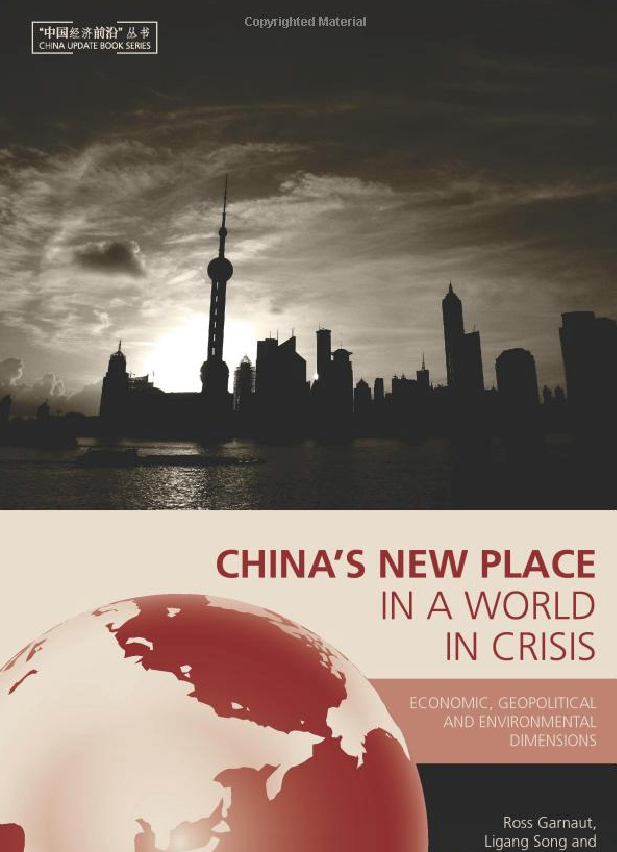Chinese Government et al Proposed C&C at COP-3 & again at COP-15
 Click logo to return to 'links-page'
Click logo to return to 'links-page'
>
'Contraction with Immediate Convergence'
This was first published by the Chinese Government in July 2009 [i.e. before COP-15]
And then again by ANU E Press The Australian National University Canberra ACT 0200, Australia and CHINA BOOKINTERNATIONAL, Co-published with SOCIAL SCIENCES ACADEMIC PRESS (CHINA) under the China Book International scheme. This scheme supports co-publication of works with international publishers."Since the principle of ‘contraction and convergence’ was first proposed by the Global Commons Institute in 2000, it has been widely embraced by some industrialised countries. Under contraction and convergence, each country will start out with emission entitlements equal to its current real emissions levels, and then, over time, converge to equal its per capita entitlements, while the overall global budget contracts to accommodate the emissions reduction objective. The convergence principle should be applied immediately rather than later as the ‘converged point’ in the future. ‘Real emissions’ is a different concept to ‘emissions entitlement’. A country’s high/low per capita real emissions cannot justify its high/low emission entitlements. In the process of convergence, the rights and interests of country B are really infringed by country A. In the NEA-based solution, the concept of convergence can still be incorporated, but it now merely means ‘convergence of real emissions’ rather than ‘convergence of emission entitlements’. Each country’s gaps between its emission entitlements and real emissions need to be balanced by the traded emissions quotas."
Greenhouse gas emissions reduction - a theoretical framework and global solution [Chapter 17] Development Research Centre of the State Council People’s Republic of China 2009
Full Document HereThe China Economy and Business Program gratefully cknowledged the financial support for the China Update 2009 from The Australian Agency for International Development (AusAID), and the assistance provided by Rio Tinto through the Rio Tinto – ANU China Partnership.
China’s New Place in a World in Crisis
This publication presents a very clear proposal for achieving a safe level of ghg's (450 ppm) in the atmosphere according to the principle of equity. It recognizes the need for a global emissions limit, distributed in the form of national tradable emissions entitlements on a per capita basis.
It recognizes that both developed and developing countries must participate, with immediate convergence of entitlements within the global limit, as distinct from convergence of real emissions.
This proposal is well on the way to UNFCCC compliance within a C&C framework. The authors believe it would be a suitable successor to Kyoto. They suggest that their proposal satisfies the requirement to recognize 'common but differentiated responsibilities’.
17. Greenhouse gas emissions reduction
A theoretical framework and global solution(This chapter is an outcome of the Development Research Centre project 'Fighting Against Global Climate Change')
P391
"Most scientists agree that global greenhouse gases must be limited in the range of 450 parts per million (PPM) of carbon dioxide equivalent (CO2-e), otherwise the consequences will be disastrous (Metz et al. 2007; Stern 2007; Garnaut 2008). How to get all countries to take coordinated action to lower their emissions is, however, a great challenge. The key is to provide incentives for each country to lower its emissions through clearly defining and enforcing each country’s emission entitlements."P392
"If, however, the emission entitlements of all countries could be clearly defined then a country reducing its emissions could ‘claim’ the benefits through the market; its emission quotas for sale would increase or the amount needing to be purchased would decrease. Hence, the core of the global emissions reduction problem is really one of how to define or allocate each country’s emissions entitlements."P392
"How do we define the initial emissions entitlement of each country? The atmosphere is a typical public resource and, in most cases, Earth’s public resources have been ‘allocated’ on a first-serve principle or have even been obtained through war. Moreover, redefining the distorted historical emissions makes things more complicated. We need therefore to find a fair, objective and simple principle to define or allocate the initial emission entitlements for each country."P397
"The future global emission amounts during T1–T2 must be scientifically set and then the emissions quotas allocated among all countries according to the per capita principle. Each country’s new emissions quotas during T1–T2, plus the NEA balance during T0–T1 are its total emissions caps by T2. Since emissions quotas can be traded and emission costs will eventually be reflected in the price of traded goods, embedded emissions are no longer a particular problem when we measure each county’s real emissions."P401
Second, the vague ‘common but differentiated responsibilities’ are clearly defined in the proposal.P402
"The problem of convergence is that now that it recognizes the per capita principle as a fair principle in the allocation of emission entitlements, the principle should be applied from the outset (T0) rather than as late as the ‘converged point’ in the future (T2). ‘Real emissions’ is a different concept to ‘emissions entitlement’. A country’s high/low per capita real emissions cannot justify its high/low emission entitlements. In the process of convergence, the rights and interests of country B are really infringed by country A. In the NEA-based solution, the concept of convergence can still be incorporated, but it now merely means ‘convergence of real emissions’ rather than ‘convergence of emission entitlements’. Each country’s gaps between its emission entitlements and real emissions need to be balanced by the traded emissions quotas."
